Fun Facts About Mars
Written by Manya Pandey, a first-year undergraduate student.
Mars faces some big storms each year but once every 3 years, a monstrous planet-sized storm rises up. This one can cover the entire Martian surface with dust and even block out the Sun!
Written by Manya Pandey, a first-year undergraduate student.
Mars is the superstar of planetary research but it’s not the holiday destination you might have imagined. At least not now, despite all the talk about Mars travel.
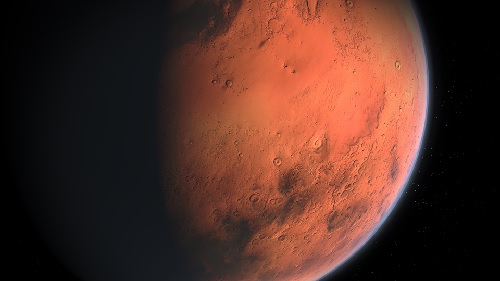
In truth, it’s very hostile–dusty, rocky, and arid. You won’t even find water or mirages there! Moreover, Mars faces violent dust storms every three Martian years (a little more than 5 ½ Earth years). These are called the ‘global dust storms’, and they can engulf the entire planet!
What are global dust storms on Mars?
Mars faces some big storms each year but once every 3 years, a monstrous planet-sized storm rises up. This one can cover the entire Martian surface with dust and even block out the Sun! That’s precisely why they are named global dust storms.
One such global storm disabled NASA’s Opportunity rover and put it to sleep forever. But the storm is not as harmful as the dust, which worries us. Wind speeds in global dust storms only reach 60 miles per hour, that’s half of the average hurricane currents on Earth.
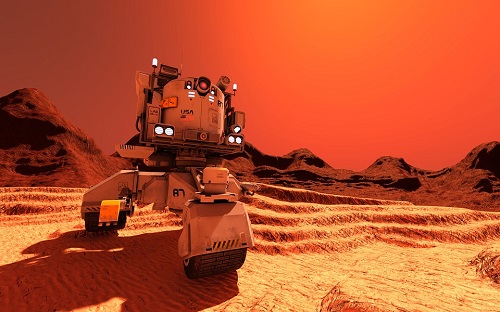
These storms are caused by the difference in air temperature between the surface and at heights. As the surface gets heated, it causes warm air currents to rise up carrying intense soil particles.
What is Mars made of?
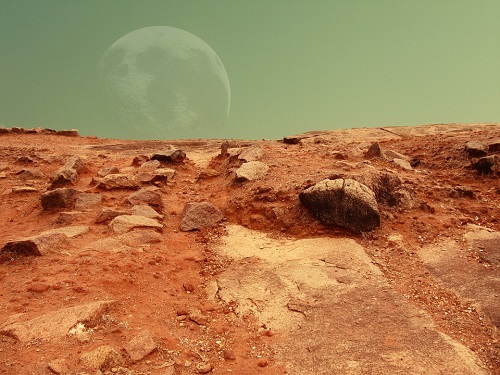
Mars has a thick crust of about 10 to 50 kilometres.
It is composed of minerals like iron, magnesium, aluminum, calcium, and potassium. Inside the planet lies a core of iron, nickel, and sulfur. The Martian atmosphere is very thin. It’s 95% carbon dioxide and the rest includes gases like -argon and -nitrogen.
If there’s no oxygen on Mars, how are we going to live there? (if ever)
Here’s some good news: NASA (the American space agency) was able to produce oxygen on Mars. One of their rovers named Perseverance carried a small scientific instrument aboard. This instrument, called the Mars Oxygen In-Situ Resource Utilization Experiment (MOXIE), began working in 2021.
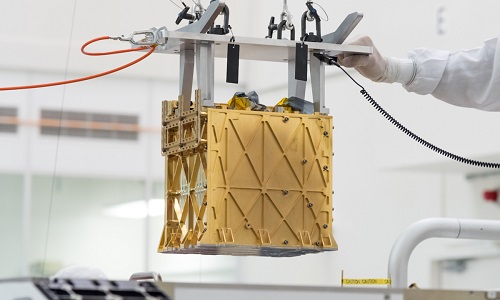
Simply put, it extracts carbon molecules out of carbon dioxide gas and then releases oxygen out to the Mars atmosphere. Carbon dioxide gas is essentially a combination of one carbon atom and two oxygen atoms. A waste product, carbon monoxide, is emitted into the Martian atmosphere.
Fun fact. During its first trial on Mars, MOXIE generated 10 minutes’ worth of breathable oxygen (about 5 grams) but it’s designed to produce 10 grams of oxygen per hour.
Some more information about Mars
Mars is the second smallest planet in our solar system after Mercury and it is named after the Roman god of war.
Researchers believe life once existed on Mars, billions of years ago, because of certain geographical features that look like dried lakes and seas basins. Currently, five space rovers are roaming all over the surface to find its leftover traces namely: Sojourner, Spirit and Opportunity, Curiosity, and Perseverance.
Why does Mars look red?
It appears red because the Martian soil has iron particles in it, these particles get rusted and give a distinct brownish tint to the planet. It’s quite similar to how iron gets rusted on Earth and turns brown.
Why is Mars an amazing planet?
The red planet is home to the largest volcano in the solar system, called Olympus Mons. It also has the deepest canyon and a huge belt of asteroids right next to it.
Mars is not as easy a place to live as you might have imagined. It’s rocky and arid, the temperature is beyond normal. In winter the temperature may drop as low as 140°C. Come join us in our space exploration with these fun facts about Mars.
Top 20 Fun facts about Mars in 2022
1. Mars experiences seasons but a little differently than us
All the planets which have a tilted axis experience seasons as they go around the Sun. But unlike the Earth, which has evenly lasting seasons
(typically 3 months), Martian seasons have very abrupt durations. For instance, Martian spring in the northern hemisphere is the longest season having 194 sols (Martian days), and Autumn in the same hemisphere is the shortest season with just 122 sols
Such absurd variations result from -Mars’s r’s egg-shaped (elliptical) orbit around the Sun.
2. There’s water on Mars
For a long time, researchers believed Mars to be just another arid, rocky planet because there was no trace of water there but in 2018, Curiosity-Rover (one of the automated robots roaming Mars) found evidence of an underwater lake in the south polar ice cap of the planet.
Some research suggests that the red planet had water about 2 billion to 2.5 billion years ago. But presently water on Mars is mainly frozen ice mixed with carbon dioxide. There are small traces of water vapour in the atmosphere as well. In fact, if we ever colonize Mars, we will drink the very same melted ice.
3. Would you believe it? There are fragments of Mars here on Earth!
These fragments are called Martian meteorites. Briefly, these are rocks that were formed on Mars but were somehow ejected out, (probably due to a collision with another space body) and after travelling for years landed on Earth as meteorites.
A total of 277 Martian meteorites have been classified as of now. Interestingly some of them are volcanic in nature which means Mars experienced volcanic activities and lava flow in the past. Exciting stuff!
4. Sounds travel slower on Mars than on Earth
Mars is a silent planet for the most part but a new study – conducted by NASA analysed the recordings sent by the Mars Rovers, which reveals that sound actually travels slower on Mars. Just to give you an estimate, sound usually travels at the speed of 767 miles per hour here on Earth, but on Mars, it is reduced to 537 miles per hour or 240 meters per second.
Scientists believe this difference is the result of Mars’s carbon-rich, thin and cold atmosphere. Such research on sound can help scientists in defending pressure variations on Mars and keep a check on the overall conditions of the rovers (by hearing wheel and engine squeaks)
5. Mars might get rings in the future.
According to researchers, if Phobos (one of the Martian moons) crashes into Mars or breaks apart, it could create a dusty ring around the Red Planet. They calculated this 50 million years before it might even happen. Nevertheless, they may not be as pretty as Saturn’s rings!
6. Hot and cold treatment
The Martian atmosphere is so thin, that it can not retain the heat from the Sun. That’s why it feels hot and cold simultaneously. The temperature on Mars can vary anywhere from 20 degrees Celsius to 153 degrees Celsius. But because the heat is slowly escaping, a person standing on the equator at noon would feel spring at their feet (24 degrees Celsius) and zero degrees Celsius at their head (that’s bitterly cold).
8. The polar ice caps are covered in a layer of frozen carbon dioxide (dry ice).
Just like Earth, Mars has south and north poles that are covered in ice but this ice is a little different. It’s called dry ice and is essentially frozen carbon dioxide. Unlike the ice on Earth that melts in springtime, ice on Mars evaporates into the Sun without turning into liquid. It’s sublime in a way.
Some quick fun facts about Mars
9. A day on Mars is 24 hours and 37 minutes
A Martian day is just a little longer than a day on Earth. It is referred to as “sol”, which suggests that Mars has quite a similar solar cycle as the Earth.
10. It would take 6 Mars planets to fit into the Earth
Mars has a radius of about 3,389 kilometres, that’s so small that we can fit 6 Mars-sized garden stones into the Earth.
11. You can jump 3 times higher on Mars
That is possible because Mars has about 62 percent less gravity than Earth. Gravity is a force that binds us to the surface.
12. For similar reasons, you’d weigh a lot less on Mars.
If you weigh 100 kilograms on -Earth, you’d just weigh 38 kilograms on Mars. Isn’t that an amazing addition to fun facts about -Mars?
13 A year is about twice as long as Earth.
What this means is, that Mars takes a longer time to go around the -Sun. Precisely almost double the time Earth takes. So one year on Mars is 687 Earth days whereas it’s just 365 days on Earth.
14. Mars is home to the highest mountain in our solar system – a volcano called Olympus Mons.
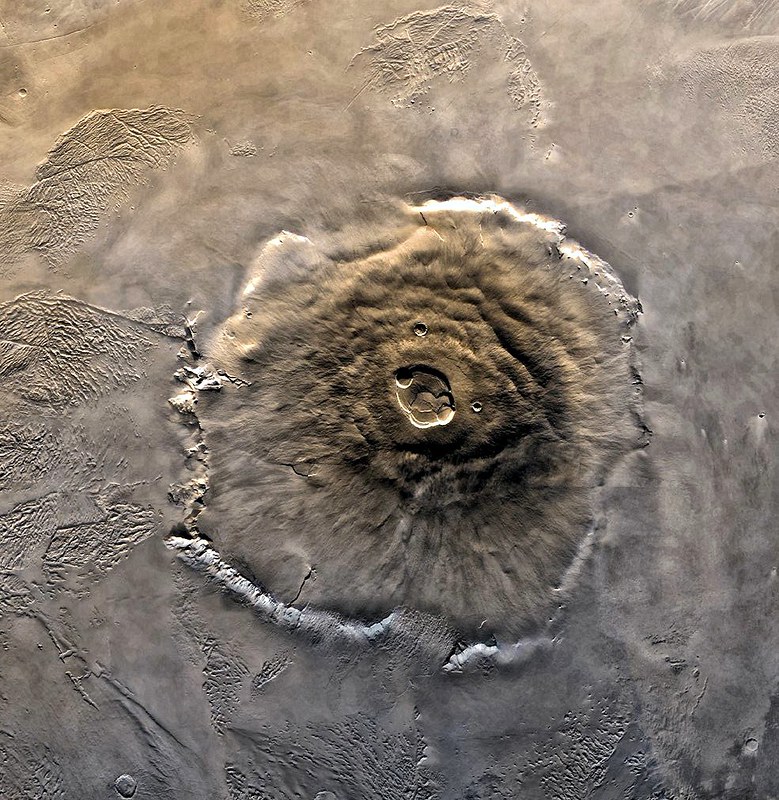
Image Credit – Stuart Rankin (flickr.com)
It’s 3 times taller than our highest mountain, Mount Everest.
15. Sunlight takes 13 minutes to travel from the Sun to Mars.
It only takes 8 minutes to reach -Earth. Not much of a difference but did you know? It takes hours to reach some planets.
Information about Mars’s moons
There has been a lot of controversy on -Martian moons because they look like asteroids that the planet caught from its neighbouring asteroid belt. Mars has two moons named Phobos and Deimos.
They were discovered in 1871 by an astronomer named Asaph Hall. Thanks to his wife’s encouragement because he was on the brink of closing down his search when he actually found Deimos. Six days later, he found Phobos right next to it.
There are two prevailing theories regarding how Mars got its moons. One says they were pushed towards -Mars by Jupiter’s gravity and the other says that -Mars was born with a lot of space objects around it and while it cleared out – most asteroids, two of them(presently the -Martian moons) remained. In either case, they are both lifeless places.
About Phobos and Deimos
Phobos is the first moon and it orbits really close to Mars – way closer than other moons orbit their home planets! It revolves so fast that it goes 3 times around the red planet in one day! But it isn’t a great sight to see a Martian moon three times a day because it isn’t very bright.
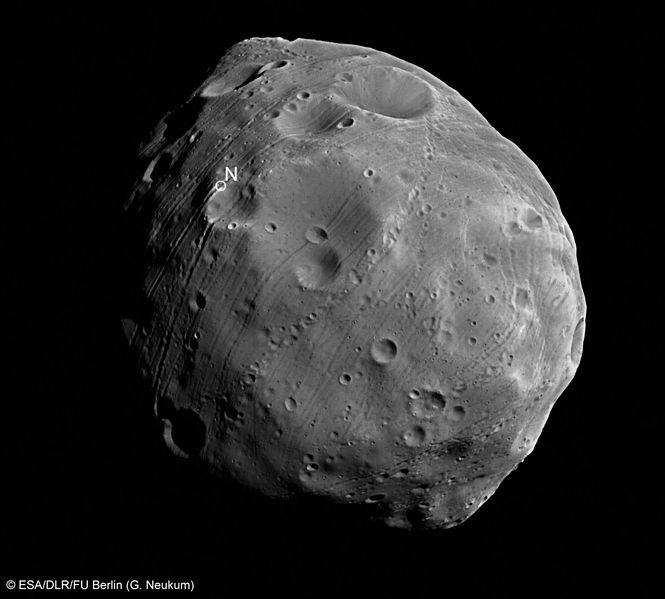
Deimos, on the other hand, orbits much further away than Phobos and it’s also a little smaller. It is slightly smaller than the other moon, so it seems even fainter in the sky.
Interestingly, it is made of asteroid-like materials including carbon and ice. It’s not as cratered as Phobos which means it didn’t have to suffer as many collisions.
Here are some fun facts about Martian moons
- They look like potatoes because they don’t have enough mass or gravity to pull themselves into a sphere.
- Mars has two moons named Phobos and Deimos. Interestingly, these were also the names of horses that pulled the chariot of the Greek god of war, Ares.
- Phobos orbits only 6 thousand kilometres away from Mars. If you were to stand on that moon, you’d get a closer view of the red planet and scientists are thinking of doing just that. NASA has considered putting observatories on Phobos.
Wonder why space scientists are conducting so much research there.
Because it’s located at a very strategic position from the Sun. Furthermore, it lies right next to the Earth, so it’s the most accessible place in the solar system. Additionally, it has rocks, mountains, and volcanoes like Earth, which makes it Earth’s geological twin. That’s a reason why Mars is an amazing planet.
Read: What is the Length of The Universe?
Have they found any interesting things on Mars?
Yes. In addition to a lot of craters that look like dried-up water basins and frozen ice and carbon, the rovers have found rocks with layers of salt in between.
What does it mean? These salts might have seeped into the rocks through an underground stream, which means they might have some ancient microbes trapped inside their tiny bubbles because mineral salts on Earth have been found to contain small traces of ancient life trapped inside their cavities.
Rovers have also found that the Martian environment once had chemistry to support microbial life. Moreover, they have also found organic carbon compounds’ variations in methane levels. Organic compounds are the building blocks of life and Methane is a gas produced by microorganisms. Interesting right?
Hope you found this useful. Do share with those who love to know about planets and space!

I Kid You Not has a large readership across India and also parts of the world. If you want to write for us, you can submit your story here. You can also apply to become a news anchor. Apply here



Comments